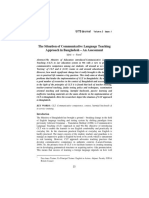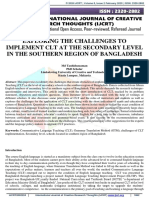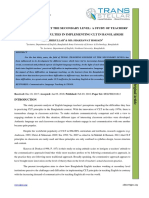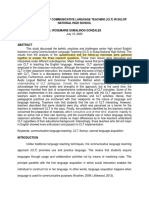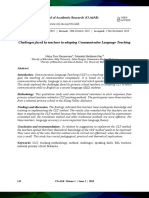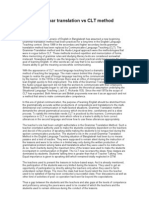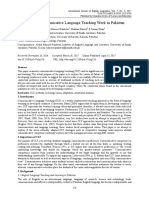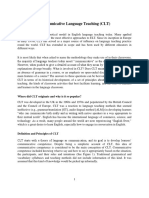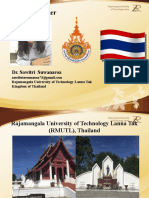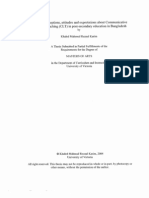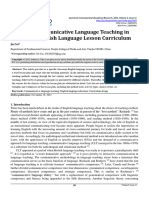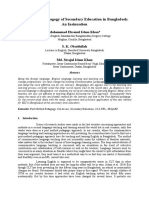0% found this document useful (0 votes)
116 views4 pagesSudipta Basak Assistant Professor Department of English Jagannath University
The document discusses challenges in implementing Communicative Language Teaching (CLT) in Bangladesh and possible ways to overcome those challenges. Some key challenges include large class sizes of 80-100 students, lack of teacher training in CLT, and cultural norms where students are not encouraged to interact in class. Possible solutions proposed are reducing class sizes, providing CLT training for teachers, modifying exams to assess communication skills, and establishing language clubs to motivate English speaking. Overcoming these challenges to effectively adopt CLT methods could help improve students' ability to communicate in English.
Uploaded by
Faisal HossainCopyright
© © All Rights Reserved
We take content rights seriously. If you suspect this is your content, claim it here.
Available Formats
Download as DOCX, PDF, TXT or read online on Scribd
0% found this document useful (0 votes)
116 views4 pagesSudipta Basak Assistant Professor Department of English Jagannath University
The document discusses challenges in implementing Communicative Language Teaching (CLT) in Bangladesh and possible ways to overcome those challenges. Some key challenges include large class sizes of 80-100 students, lack of teacher training in CLT, and cultural norms where students are not encouraged to interact in class. Possible solutions proposed are reducing class sizes, providing CLT training for teachers, modifying exams to assess communication skills, and establishing language clubs to motivate English speaking. Overcoming these challenges to effectively adopt CLT methods could help improve students' ability to communicate in English.
Uploaded by
Faisal HossainCopyright
© © All Rights Reserved
We take content rights seriously. If you suspect this is your content, claim it here.
Available Formats
Download as DOCX, PDF, TXT or read online on Scribd
/ 4

